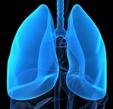Advertisment
Killer ARDS under-recognised and under-treated

by Bruce Sylvester: Researchers report that about 10 per cent of patients in intensive care units worldwide have Acute Respiratory Distress Syndrome (ARDS), that the mortality rate from ARDS remains high and, notably, that ARDS in this setting is both under-recognized and under-treated.
The findings appeared on Feb. 22, 2016 in JAMA, the Journal of the American Medical Association.
“We know that 40 per cent of patients with ARDS die, either of this syndrome or their primary illness or injury, so this new, global understanding of this important public health issue and how we are treating it is enormously important for patients and clinicians,” said John Laffey, MD, lead author and chief anesthesiologist at St. Michael’s Hospital in Toronto.
The Large Observational Study to Understand the Global Impact of Severe Acute Respiratory Failure (LUNG SAFE) was an international, multicenter, prospective study of patients undergoing invasive or noninvasive ventilation in intensive care units (ICUs). Investigators conducted the study for 4 consecutive weeks in the winter of 2014, and in 459 ICUs in 50 countries on 5 continents.
Of the 29,144 ICU patients enrolled in the study, 3,022 (10.4%) were eventually diagnosed with ARDS.
Subjects died in the hospital at rate of 34 per cent for mild ARDS, 40.3 per cent for moderate ARDS and 46.1 per cent for severe ARDS.
Notably, while 10.4 per cent of the study subjects developed ARDS, 40 per cent of all cases were not diagnosed upon admission to an ICU.
“Moreover, clinicians frequently failed to deliver interventions with proven efficacy,” said Brendan Clark, MD and Marc Moss, MD, both of the Division of Pulmonary Sciences and Critical Care Medicine, University of Colorado School of Medicine, Aurora, Colorado, in an accompanying editorial. “For example, 36% of patients with ARDS did not receive low tidal volume ventilation and instead received potentially deleterious high tidal volumes of greater than 8 mL/kg of predicted body weight. Patients with ARDS also routinely received low levels of PEEP [positive-end expiratory pressure], well below the amount used for a high-PEEP strategy. In addition, prone positioning, a therapy found to significantly decrease mortality in moderate to severe ARDS, was rarely used and indeed was used no more commonly than other purported rescue therapies (inhaled nitric oxide and systemic corticosteroids) for which previous randomized trials failed to demonstrate clinical benefit. Perhaps most importantly, the study confirmed that the in-hospital ARDS mortality remained high, with 34.9% mortality for mild, 40.3% mortality for moderate, and 46.1% mortality for severe ARDS.”
While the investigators found some geographic differences in the recognition and treatment of ARDS, they were significant. The highest incidence of ARDS was in Australia and New Zealand, followed by Europe and North America.
The authors concluded, “This syndrome appeared to be under-recognized and under-treated and associated with a high mortality rate. These findings indicate the potential for improvement in the management of patients with ARDS.”





